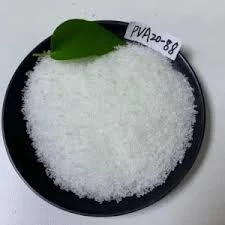Understanding Methyl Cellulose and Hydroxypropyl Methylcellulose (HPMC)
Methyl cellulose and its derivative, hydroxypropyl methylcellulose (HPMC), are crucial compounds widely utilized in various industries, ranging from food and pharmaceuticals to construction and personal care products. These cellulose ethers are derived from natural cellulose, which is extracted from plant materials, making them appealing both for their utility and their natural origins.
What is Methyl Cellulose?
Methyl cellulose is a non-ionic cellulose ether that is created through the methylation of cellulose. This process involves replacing hydroxyl groups with methoxy groups, resulting in a compound with distinct properties. Notably, methyl cellulose is soluble in cold water, forming a viscous gel when heated. Upon cooling, this gel can solidify, making it a unique thickening, film-forming, and emulsifying agent. As a result, methyl cellulose finds application in a variety of products, including sauces, dressings, and gluten-free baked goods, where it serves as a texturizing agent and stabilizer.
Hydroxypropyl Methylcellulose (HPMC) A Step Further
Hydroxypropyl methylcellulose is a modified version of methyl cellulose, where hydroxypropyl groups are introduced along with the methoxy groups. This modification enhances its solubility in hot water, making HPMC a versatile compound for use in both hot and cold applications. HPMC retains many properties of methyl cellulose but offers improved film-forming capabilities, making it ideal for coatings and binding applications.
Applications in Various Industries
Food Industry
In the food industry, methyl cellulose and HPMC are predominantly used as thickening agents, stabilizers, and emulsifiers. They improve the texture of food products, enhance mouthfeel, and assist in moisture retention, particularly in gluten-free food items. Their gelling properties contribute to creating the desired viscosity and texture in sauces, dressings, and bakery products, allowing them to mimic the properties of gluten.
Pharmaceutical Sector
methyl cellulos hpmc

In pharmaceuticals, HPMC is widely employed as an excipient in tablet formulations. It acts as a binder, helping to hold ingredients together before the tablet is formed. Furthermore, HPMC can modify the release profiles of drugs, allowing extended or controlled release formulations. Its biocompatibility and non-toxic nature make it suitable for various dosage forms, including capsules, tablets, and topical applications.
Construction and Coatings
The construction industry also benefits from the use of methyl cellulose and HPMC. These compounds play an essential role in improving the workability and performance of cement-based materials. By enhancing the water retention of mortars and plasters, they ensure better adhesion, improved drying times, and overall strength. Additionally, HPMC is used in paints and coatings, where it acts as a thickener and stabilizer, contributing to the overall performance and durability of the final product.
Personal Care Products
In personal care products, these cellulose derivatives are utilized for their thickening and film-forming properties. They are often found in lotions, creams, and gels, where they enhance texture and stability. Their ability to form a flexible film on the skin supports the formulation of long-lasting products that deliver moisturizing benefits.
Safety and Regulatory Aspects
Both methyl cellulose and HPMC are generally regarded as safe (GRAS) by regulatory bodies such as the FDA, when used appropriately in food applications. Their natural origin and lack of toxicity contribute to their widespread acceptance across various industries.
Conclusion
Methyl cellulose and hydroxypropyl methylcellulose are exemplary compounds that showcase the versatility of cellulose derivatives. Their wide-ranging applications in food, pharmaceuticals, construction, and personal care underscore their importance in modern formulations. As industries continue to evolve, the demand for safe, efficient, and natural additives will likely drive further research and innovation in cellulose-based products. Understanding the properties and functionalities of methyl cellulose and HPMC will empower businesses to optimize their formulations, catering to the contemporary consumer's expectations for quality and sustainability.
-
Rdp Powder: Key Considerations for Wholesalers in the Building Materials IndustryNewsJul.08,2025
-
Key Considerations for Wholesalers: Navigating the World of Hpmc - Based ProductsNewsJul.08,2025
-
Hpmc Detergent: Key Considerations for WholesalersNewsJul.08,2025
-
Key Considerations for Wholesalers: China Hpmc For Tile Adhesive, Coating Additives, Concrete Additives, and MoreNewsJul.08,2025
-
Crucial Considerations for Wholesalers: Navigating the World of Construction MaterialsNewsJul.08,2025
-
Key Considerations for Wholesalers Sourcing Additive For Cement, Additive For Concrete, Additive For Putty from Additive Manufacturer Shijiazhuang Gaocheng District Yongfeng Cellulose Co., Ltd.NewsJul.08,2025




